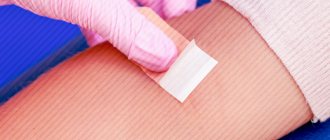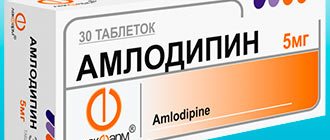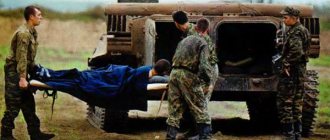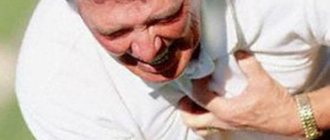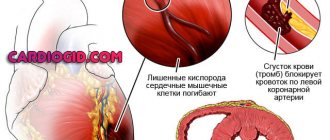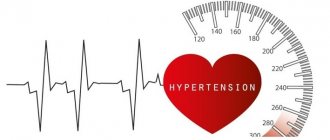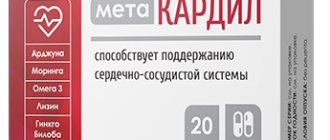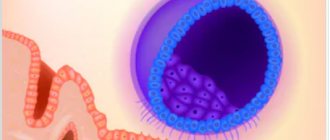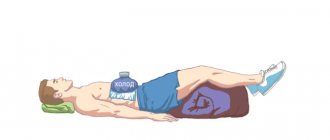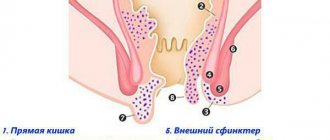The necessary materials to stop bleeding may not always be available. If a large arterial vessel is damaged, failure to provide assistance threatens the victim with large blood loss, even death.
Therefore, finger pressure of the arteries may be temporary, but the only way out in the situation until medical help arrives.
Immediate compression of a bleeding vessel is resorted to not only at the scene of an accident, but also during surgery in case of damage to the arterial trunk. One of the surgeons presses on the suspected rupture site, the other ligates the artery above or applies a clamp.
Places of compression of the main arteries
What you need to know to carry out pressing
It is impossible to squeeze the vessel between your fingers because:
- it is not visible at all in a bleeding wound;
- At the same time, contaminated scraps of clothing and bone fragments may surround the site of the lesion.
Therefore, during arterial bleeding, the main afferent (main) vessel is compressed not in the wound, but above it - “along.” This reduces blood flow to the injury site. Not everyone knows anatomy well. The person providing assistance should only be familiar with the location of the main pressure points.
They are not chosen arbitrarily, but in accordance with the direction of the vessels and the nearest anatomical bone formations. For compression to be effective, the artery must be clamped on both sides.
The method is completely inapplicable when a bone is fractured at the point of supposed compression.
Since bleeding requires emergency care, the following rules should be followed:
- delay is dangerous for the life of the victim, so the condition is assessed instantly (type of pulsating wound);
- if necessary, you can tear or cut part of the victim’s clothing, this will still have to be done to examine the wound;
- methods of compression are recommended either only with the thumbs, or by wrapping the hand so that the thumb is located at the desired point, however, after 10 minutes the rescuer may experience cramps and pain in the hands, so in practice one has to adapt and press with a fist;
- if the origin of the bleeding is unclear, then it is allowed to press with your palms on the wound itself until the location of the damage is determined (this is what you do when you are wounded in the stomach);
- It is necessary to maintain pressure until the pressure bandage is applied; if after this the bleeding intensifies, the pressure will have to be repeated.
Let's look at specific pressure points.
Ways to stop arterial bleeding
Hemostasis is a biological system of the body that ensures the liquid state of blood under normal conditions and stops bleeding when the integrity of the vascular wall is violated. With capillary and venous hemostasis, spontaneous hemostasis occurs, that is, stopping blood loss by the internal forces of the body.
- First aid for arterial bleeding: technique of applying a tourniquet and sterile dressing
- Medicines to thin the blood and prevent blood clots after surgery or for varicose veins
- Hemorrhagic stroke - signs, first aid, drug therapy and prevention
- Portal hypertension - classification, signs, drug and surgical therapy, complications
In cases where hemostasis does not occur independently, methods of temporary and permanent bleeding stop are used. A permanent stop can only be made in a hospital setting, and a temporary stop is used as emergency first aid. Methods for temporarily stopping arterial bleeding:
- finger pressure of the artery;
- fixed limb flexion;
- application of a tourniquet.
Finger pressure of arteries
The finger pressure method is used in cases where it is necessary to stop mild bleeding. At the same time, they are guided by the “3D” rule - push-ten-ten. This means that you need to use all 10 fingers of both hands to press the vessel against the bone along which it runs for 10 minutes. For profuse (extensive) bleeding, this method is ineffective or ineffective.
Application of a tourniquet
The most effective way is to apply a tourniquet. In the absence of a special medical tourniquet, improvised means are used. In this case, it is worth remembering that the tourniquet must be wide. Applying a tourniquet for arterial bleeding is performed according to the following rules:
- It is applied above the wound to clothing or to fabric wrapped around a limb, since applying it directly to the skin causes trauma to the underlying tissues.
- The tourniquet is stretched and made 2-3 turns around the limb. The next turns are applied with tension.
- After application, the pulsation of the arteries below the wound is checked. The application is performed correctly if the pulsation is absent or poorly defined.
- The tourniquet should always be visible.
- The tourniquet is applied for 30 minutes in winter, 60 minutes in summer, since with longer compression in the limb, necrosis processes begin. During long-term transportation, the tourniquet is removed for 10 minutes while simultaneously pressing the artery to restore blood circulation in the limb.
- A note is always attached indicating the exact time the tourniquet is applied.
Fixed limb flexion
A method of temporarily stopping external arterial bleeding by fixed flexion of the limb is considered effective for wounds of the forearm, hand, leg or foot. When using this technique, it is worth considering that the flexion of the limb should be maximum, and a fabric roll should be placed in the elbow bend or popliteal fossa.
Brachial artery
The closest point lies between the shoulder muscles.
- The victim's hand should be raised or placed behind his head.
- It is more convenient to be behind the patient.
- The vessel is clamped with four fingers from the outside or from the inside.
- The depression between the muscles below the shoulder joint is felt at 1/3 of the shoulder and this place is firmly pressed against the bone.
Pressing the brachial artery from the front (a) and back (b) positions
Efficiency. Professionalism. Mercy
First aid
trauma, bleeding, blood vessels, emergency medical care
In the next issue of “First Aid,” Oleg Nesterov, head of the quality control department for medical care at the Tyumen ambulance station, will tell you how to properly provide emergency care for bleeding.
Types of bleeding: different approaches
There are three types of bleeding: capillary, venous and arterial. How can you distinguish them visually? With capillary bleeding, droplets of blood appear on the surface of the skin. With venous, blood flows in a stream, like from a tap. But the most dangerous, life-threatening bleeding is arterial. Its main symptom, regardless of the color of the blood, is pulsating, in the rhythm of the heartbeat, in jerks. Often, with arterial bleeding, a blood ridge is formed, which can be compared to how geysers shoot out of the ground. But even this bleeding can be stopped.
Stopping methods: holding the wound tightly
There are several methods to stop bleeding. An emergency stop is digital pressure on the vessels in the wound. But it is advisable to somehow protect yourself. The simplest thing is to put any plastic bag on your hand like a glove. With a hand, a fist, or at best, of course, a rolled up bandage, the wound must be pressed down with force until the bleeding stops. And then you can call for help, look for a tourniquet, call an ambulance. It should be noted that clamping a wound is not an easy task; it will take a lot of effort.
Neck – any folded fabric will do for this. We hold the wound tightly. We clamp one artery and leave the trachea free. Bleeding often cannot be completely stopped, but it can at least be slowed down.
There is an artery in the axillary region - you need to feel it with your fingers, then just take the entire inner area of the shoulder and press firmly with your hands to the bone, and below the bleeding will stop.
Under no circumstances should you open your hand from the wound. If you feel tired, you need to either help yourself with your other hand, or ask for help - so that someone else presses on your hands from above.
In case of internal bleeding, the main task is to get the patient as quickly as possible to where there is a surgeon and an operating table. The only thing you can do if there is bleeding in the abdomen is to press hard on it with your fist. Signs of internal bleeding: there is a wound, the person is pale, and has a rapid heartbeat.
Cold stops only capillary bleeding. For arterial blood, cold is useless.
Applying a tourniquet: focusing on blood flow
If the wound is on the neck, where the largest carotid artery is located, then a tourniquet cannot be applied. But you can fix the bandage through the arm opposite to the wound.
The points for applying the tourniquet on the limbs are the middle or lower third of the shoulder. Accordingly, a tourniquet is also applied to the thigh.
When applying any tourniquet, the bleeding should stop!
For wounds on the extremities (pink stickers on the layout indicate bleeding areas), a tourniquet is applied above the wound. When bleeding in the neck and head area, the artery is pinched below the wound. The explanation for this is very simple - arterial blood flow comes from the heart.
The tourniquet is stretched, applied to the limb, the ends are crossed, fixed with a finger and wrapped again with less force. Similarly, bleeding is stopped using a belt and other suitable means at hand.
The biggest mistake is when a tourniquet is applied for venous bleeding (although it would be enough to apply a tight bandage), but they do it weakly; as a result, the blood flow not only does not slow down, but becomes stronger. Important: when applying any tourniquet, the bleeding must stop! It is this sign that indicates that the rescue actions were completed correctly.
After 15 minutes, loosen the tourniquet without removing the first round, and when bleeding resumes, tighten it again. During this time, it is guaranteed that necrosis of the limb tissue will not occur.
Another way to apply a tourniquet is twisting. You need a tourniquet (thin scarf, bandage, lace, any elastic fabric, etc.) no less than the length of your arm. But someone else must run for the rope and stick, since the wound of the victim cannot be let go for a second. We wrap the tourniquet around the limb twice, tie a knot, tighten it, leaving the finger under the bandage. Then insert a pencil or similar object under the top of the bandage and twist it until the bleeding stops. Once the bleeding has stopped, the pencil should be securely fastened.
Elena SIDOROVA, specially for 72.ru
Carotid artery
Pressure of the carotid artery is required for bleeding from the vessels of the head, submandibular region, and upper neck. The situation is complicated by the impossibility of applying a circular pressure bandage to the neck, because the victim will suffocate.
Therefore, pressing is carried out on the wounded side with the thumb, when the rest are located on the back of the victim’s head, or with four fingers when approaching from behind. It is important to take into account the direction of the blood through the carotid artery: it is clamped below the site of injury.
In these ways the carotid artery is pressed
The desired point is located in the middle of the anterior surface of the neck muscle. Turn the wounded person's head in the opposite direction and it will be clearly visible. The artery is pressed against the spinous processes of the vertebrae.
Pressure points of arteries
Temporary stopping of arterial bleeding using finger pressure at any location of the damaged vessel, with the exception of the head and neck, is carried out above the wound to the bone along which the artery runs. Points of finger pressure of arteries:
| Localization | Artery | Subjacent bone | External landmarks |
| Above the ear or in the temporal region | Temporal | Temporal | 1 cm above and anterior to the external auditory canal |
| Cheek | Facial | Lower jaw | 2 cm anterior to the angle of the mandible |
| Upper and middle neck, face and submandibular area | General sleepiness | Transverse process of the fourth cervical vertebra (carotid tubercle) | In the middle of the inner edge of the sternocleidomastoid muscle at the level of the upper edge of the thyroid cartilage |
| Shoulder joint, upper third of the shoulder, subclavian and axillary areas | Subclavian | First rib | On the back of the clavicle in the middle third |
| Upper limb | Axillary | Head of humerus | Along the anterior border of hair growth in the armpit |
| Shoulder | Inner surface of the humerus | Along the inner edge of the biceps | |
| Elbow | Upper third of the ulna | On the front surface of the forearm on the side of the 5th finger (little finger) | |
| Radial | In the lower third of the radius | At the pulse detection point | |
| Lower limb | Femoral | Horizontal ramus of the pubis | In the middle of the groin fold |
| Popliteal | Posterior surface of the tibia | At the top of the popliteal fossa | |
| Posterior tibial | Posterior surface of the medial malleolus of the tibia | On the inner surface of the shin | |
| Artery of the dorsum of the foot | Along the anterior surface of the tarsal bones of the foot outward from the extensor of the big toe | Midway between ankles | |
| Pelvic region and iliac arteries | Abdominal aorta | Lumbar spine | Pressing a fist to the left of the navel |
Bleeding from the hand or foot
Typically, bleeding from the vessels of the hand and foot is not life-threatening. But to reduce blood loss and while preparing a pressure bandage, you can apply finger pressure. The limb should be elevated. The hand is compressed with a circular grip in the middle third of the forearm. On the foot, it is necessary to press the vessels from the back side.
Pressing the artery requires strength from the first aid provider, so you need to try to attract the attention of others and call an ambulance. At the same time, you do not need to think about observing the rules of asepsis and antisepsis, washing your hands, or disinfecting your skin. Losing time aggravates the victim's condition.
A rescuer, providing assistance without gloves, exposes himself to the risk of contracting blood-borne infections (viral hepatitis, AIDS) from the victim. You need to take this into account and undergo the necessary laboratory tests at the clinic.
NAR Combat Application Tourniquet (CAT)
This tourniquet is a classic version of a tourniquet - a device that is twisted using a lever and allows you to gradually increase pressure on the vessel until bleeding stops.
Tourniquets are considered one of the most effective devices for stopping bleeding and the safest for health. The harness consists of a tape with an adhesive coating, a buckle with a special adapter and the lever itself. Main advantages:
can be applied with one hand;
allows you to gradually increase the pressure on the vessel to the required level.
An analogue of CAT is another type of tourniquet - SOF. The developers assure that the device does not lose its efficiency and performance even in low temperatures, which is quite important for Russia.
